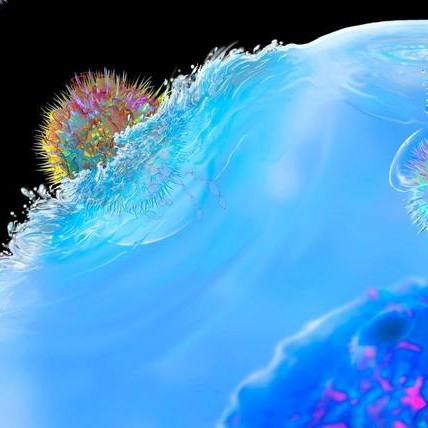-
Biotherapeutics
Science Saturday: Interstellar stem cell research to improve regenerative therapies

Mayo Clinic research is reaching to the cosmos for answers on how to overcome hurdles in engineering human stem cells. Mesenchymal stem cells are adult stem cells with potential to unleash the body’s ability to heal diseased tissues and organs. However, growing or culturing stem cells in the laboratory is a slow process, and sometimes cells lose potency in the transfer from the body to the culture dish.
In his quest to improve manufacturing of stem cells for regenerative therapies, Abba Zubair, M.D., Ph.D., a leader in the Center for Regenerative Medicine, had stem cells from the research laboratory at Mayo Clinic in Florida flown on an interstellar trip to the International Space Station. His research team seeks to understand whether culturing stem cells in microgravity could improve function and accessibility. Dr. Zubair’s study, published in Nature Partner Journals Microgravity, finds stem cells grown in weightlessness are safe and feasible for applications to human disease.

“In this study, we have established the identity, purity, viability and sterility of growing mesenchymal stem cells for human application at the International Space Station compared to ground controls,” says Dr. Zubair, who is senior author on the study. “The use of standard two- dimensional tissue culture flasks on Earth is an unnatural condition for cell growth. Therefore, culturing stem cells aboard the International Space Station under a weightlessness environment may provide a more natural three-dimensional environment for stem cell expansion and organ development.”
The demand for stem cells is growing as regenerative science explores new applications for restoring health. Physician-scientists are investigating the use of stem cell therapy for diverse conditions including spinal cord injury, diabetes, Parkinson’s disease, Alzheimer’s disease, heart disease, burns and even cancer.
The Research
Mesenchymal stem cells were rocketed to the International Space Station in a special device for transportation and culture. Astronauts imaged the cells every 24 to 48 hours and harvested them at seven and 14 days. When the cells returned to Earth, Dr. Zubair’s team compared them to cells grown in a laboratory in Florida. The research found that cells grown in a weightless environment in space had improved function over those grown on earth. And, microgravity had a more significant effect on improving cell function than it did on speeding the process of growing the cells.
“We found that weightlessness had significant impact on the mesenchymal stem cell capacity to secrete cytokines and growth factors. They appeared to be more potent in terms of immunosuppressive capacity compared to their identical ground control,” says Dr. Zubair.
One concern about culturing cells in microgravity is whether it could trigger the emergence of cancerous cells. Significantly, chromosomal, DNA damage and tumorigencity testing showed no evidence of malignant transformation of cells cultured space. Therefore, Dr. Zubair’s team concludes that it is feasible and safe to grow mesenchymal stem cells aboard the International Space Station for potential future clinical applications. Additional research will be needed to verify the findings.
###







